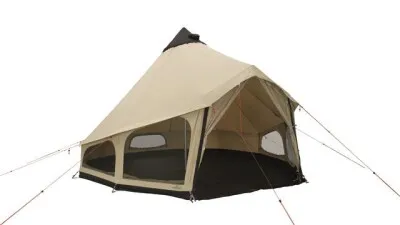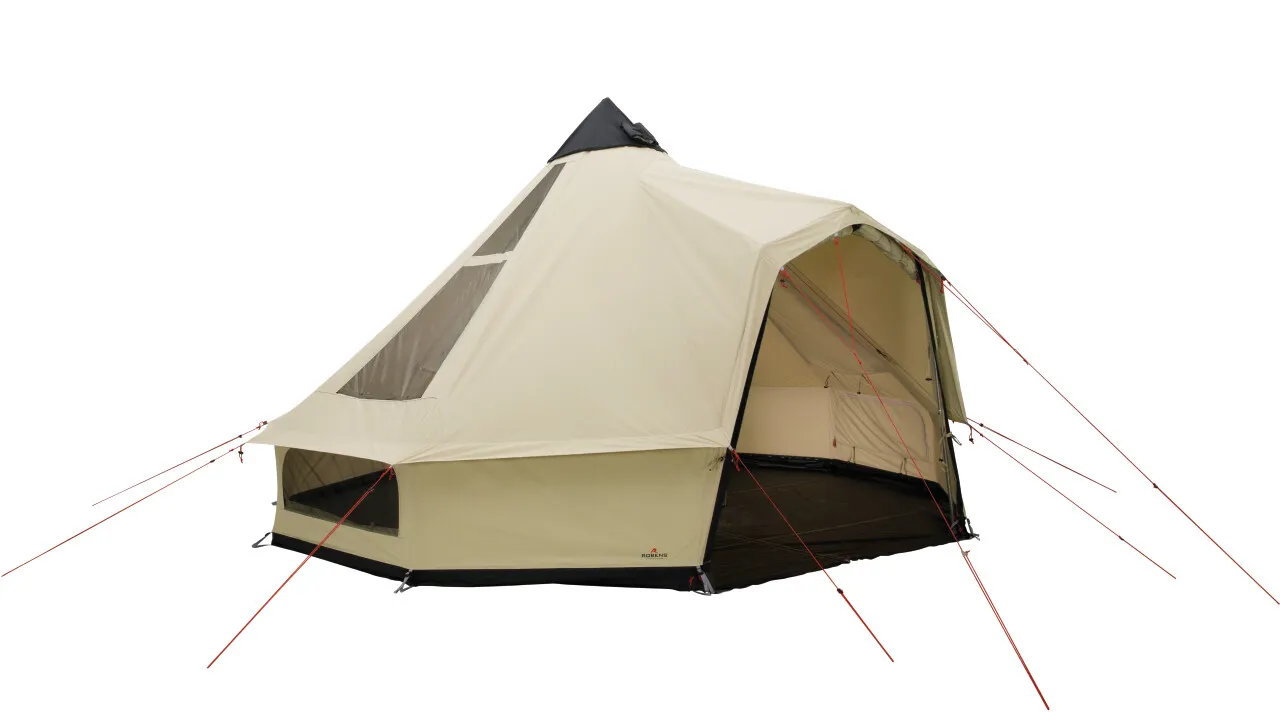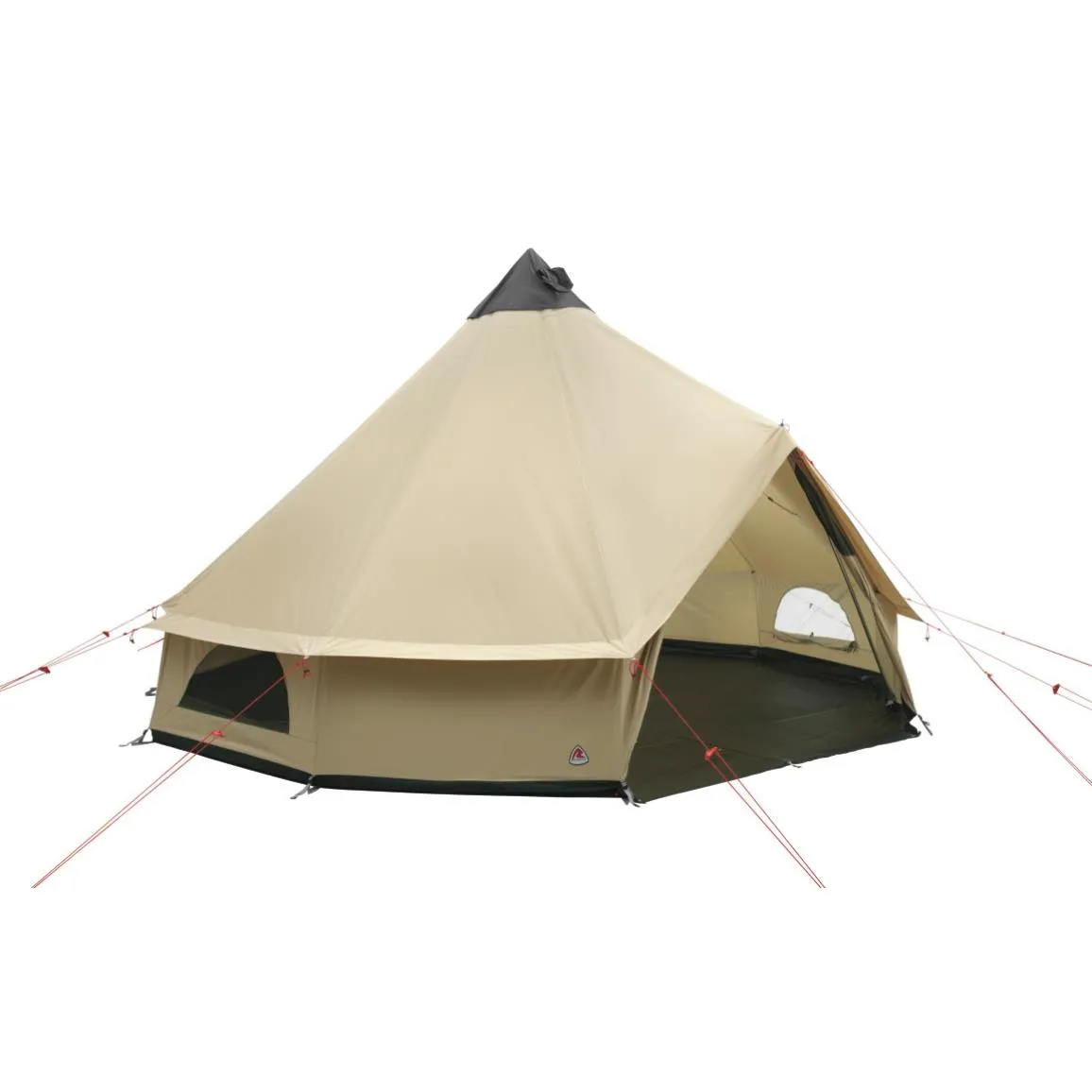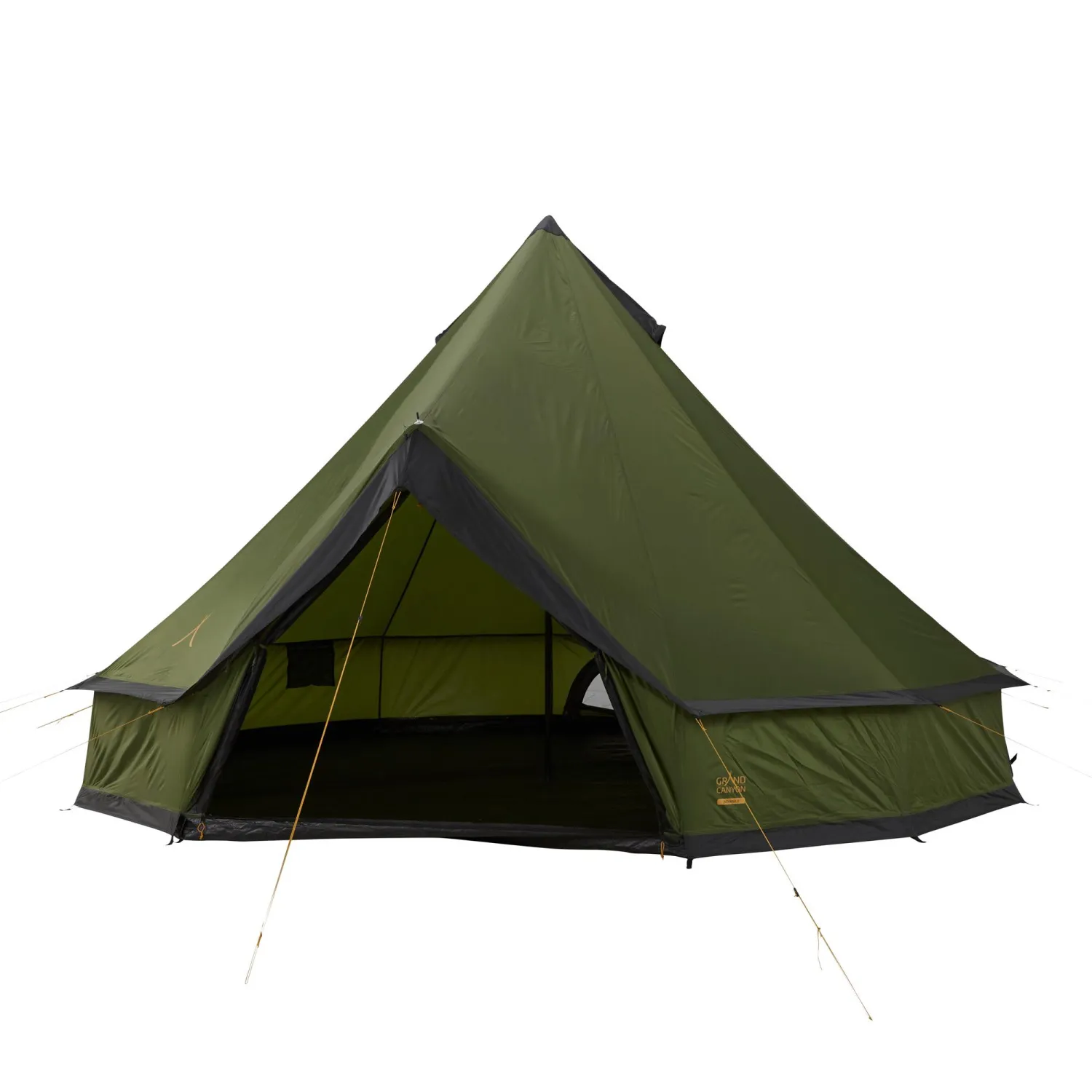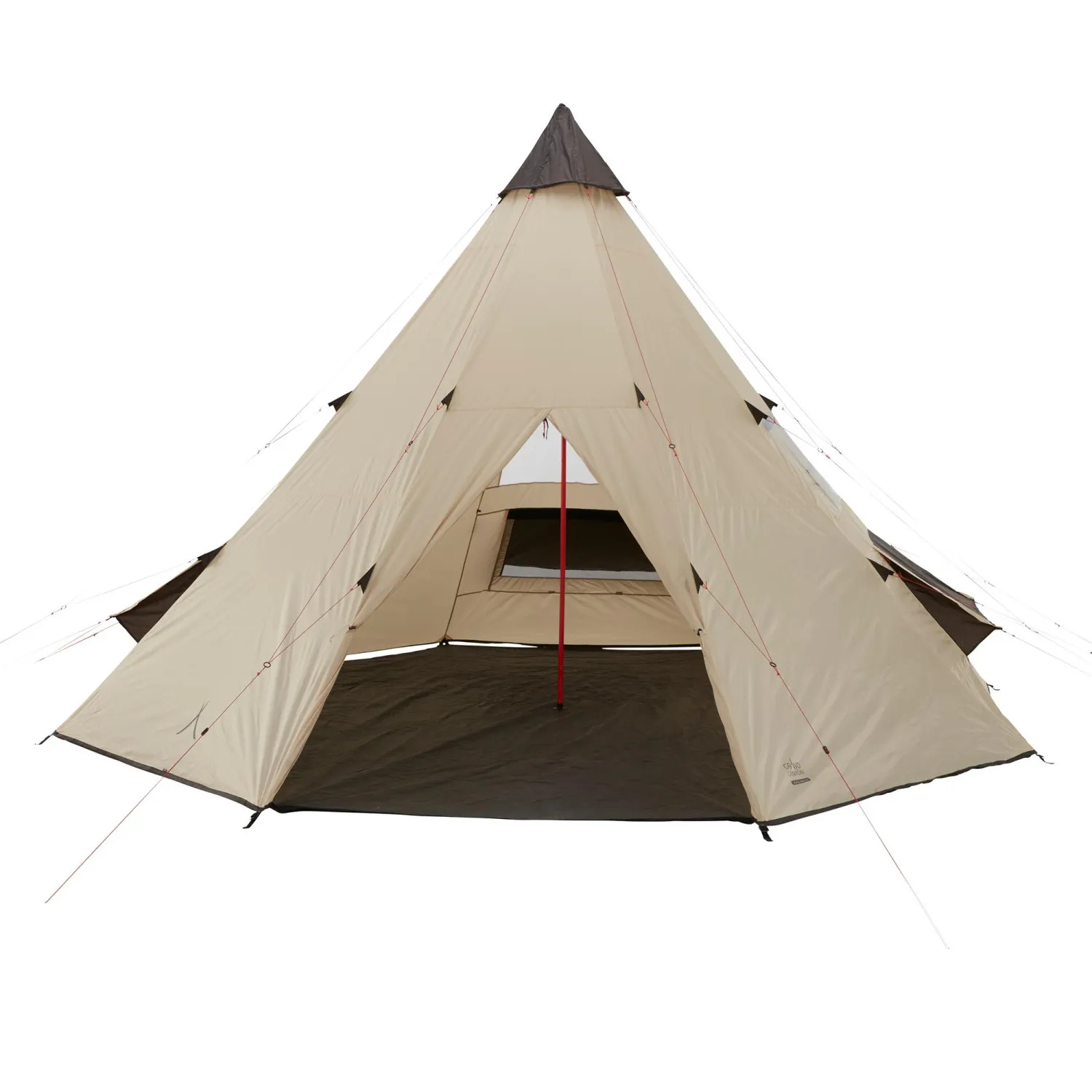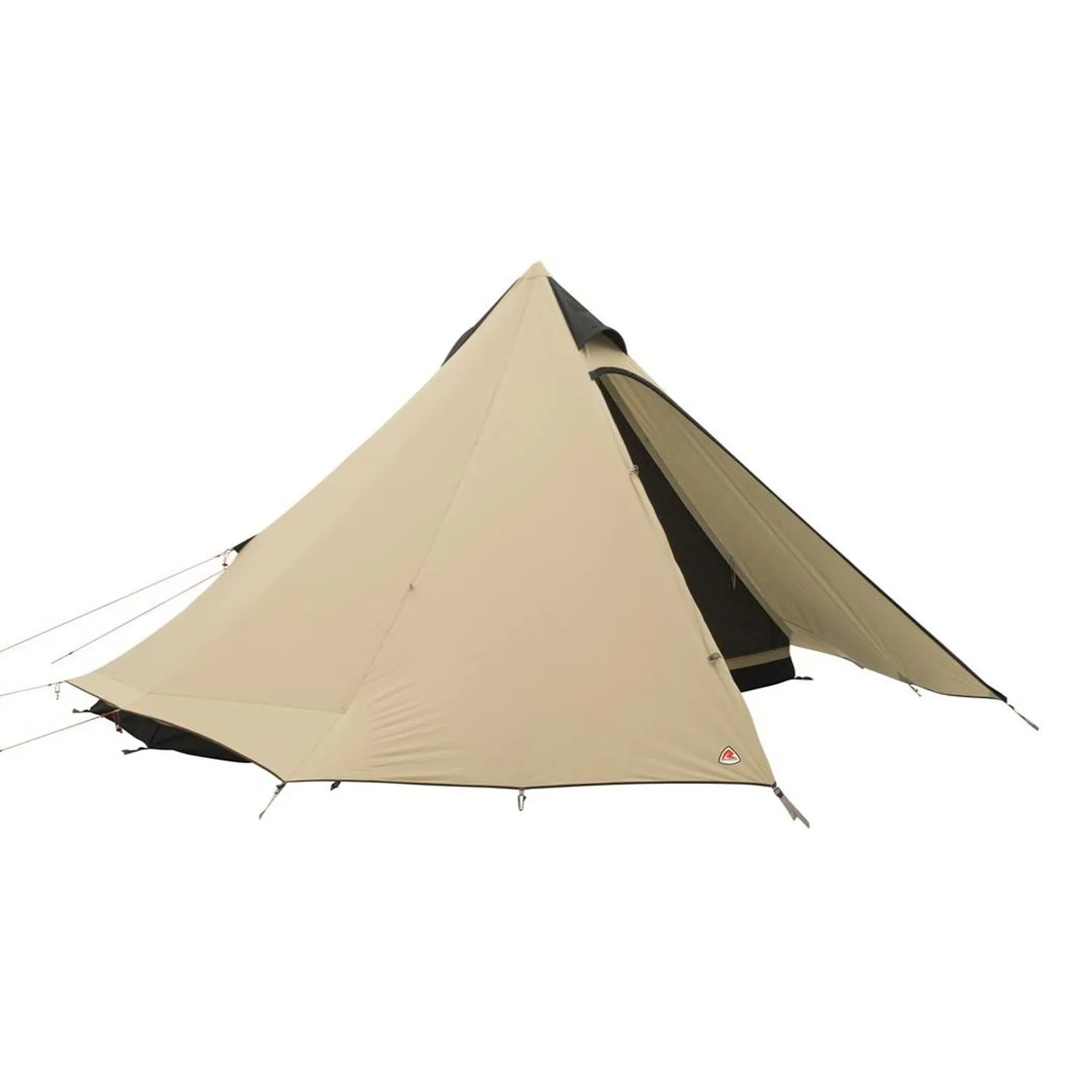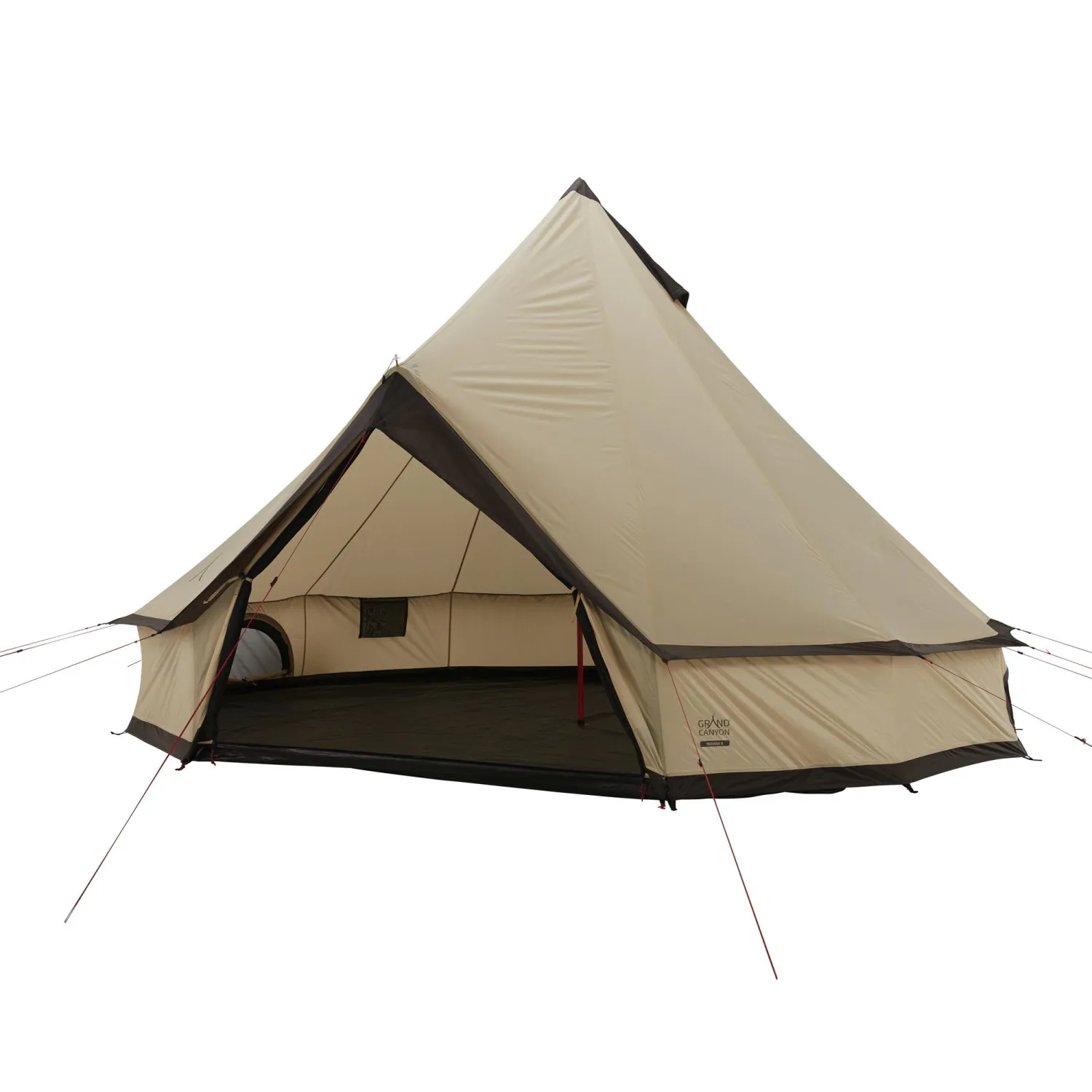Group tents
Large group tents for up to 16 people
Whether it's a tent camp, a camping holiday with the club, the team, a school trip or to celebrate a big birthday outside - group tents are true quick-change artists and offer a lot of comfort.
Enjoy many sociable hours, a strong sense of togetherness and maximise the team spirit of your group!
7 aspects that make the difference when it comes to group tents
1. Waterproofness
If the tent leaks and sleeping bags and clothes get wet, the general mood will plummet and the trip will come to an abrupt end.
You can find out whether your group tent is waterproof by taking a look at the water column rating.
Specified in mm, this tells you how much water the tent can "withstand". From a value of 1500 mm, your group tent is considered waterproof. Do you want to visit regions that are notorious for their high rainfall? Plan with a tent that can have a water column of 3000 mm.
2. Size of the group tent
Not only do you need enough sleeping space in the group tent for all your fellow travellers, you should also plan enough space for their luggage and a lounge area. Perhaps you would like to cook in the tent or install a stove? You'll need extra space for this too.
Our group tents can accommodate up to 16 people. One of our tents can even accommodate over 40 people.
3. Tent with standing height
Group tents are generally built in such a way that you can easily stand inside. Especially when it is uncomfortable outside and you have to stay in the tent, it would be unbearable to have to crouch on the ground with your group.
4.Sleeping cabin compatibility
Night owls and early risers in a group - that's where you can get in each other's way. It's good if sleeping cabins are either included in the tent or can be added.
Because even if everyone agrees on bedtimes, it's nice to have places to retreat to and a clear separation between the living and sleeping areas.
5. Uncomplicated tent set-up
Any tent can be set up quickly with teamwork. Or so you would think. However, it doesn't detract from the general mood if the tent set-up is pleasantly uncomplicated.
Our tents are quick and easy to set up - either with poles or in no time at all using air ducts. The latter do the work as if by themselves.
6. Ventilation options for the group tent
With lots of people in one room, the air can get stuffy. So when choosing your tent, check whether it has sufficient ventilation options.
Ventilation points distributed throughout the tent, windows or side doors ensure good air circulation.
7. Tent floor included?
Check whether the groundsheet is included with the group tent of your choice. Depending on the type and size of tent, you may need to order this separately.
The best material for a 6-person to 20-person tent
As a rule, group tents always contain a polyester component or consist mainly of this material.
There is a reason for this: polyester is very light, making it easy to set up, take down and transport. The synthetic fibre is also extremely robust. High winds can hardly damage the tear-resistant material. Even rain hardly affects polyester - once wet, it dries quickly, does not mould and does not absorb moisture. The material is made even more waterproof by a special coating. You only need to wipe it down briefly to clean it.
Disadvantage: The material is not very breathable. In hot temperatures, it can quickly become stuffy in a polyester tent. However, ventilation windows and slits can help.
Cotton feels more comfortable in the hand. If you are camping in very warm and dry areas, this breathable and UV-resistant material can be an alternative.
Of course, if you don't change locations often, cotton makes transport and pitching more difficult due to its higher weight.
Cotton tents remain waterproof in the rain and protect you from bad weather just as well as polyester tents, but they dry very slowly as the cotton fibres absorb the moisture and swell.
If not dried properly, the material can become mouldy.
A mix of the two materials is often a good choice. The polyester fabric keeps the tent reliably dry, light and requires little maintenance. Cotton, on the other hand, keeps the air in the tent pleasant and is environmentally friendly.
The different types of group tents at a glance
Group tents are available in different sizes and variations - we have taken a closer look at the three most common ones for you:
Steep wall tents are usually "house-shaped". The walls run steeply towards the ground. This means that the centre of the room is comfortably high, but the sides are not. However, you can use this low space for sleeping areas.
The rectangular shape is ideal for creating a clear separation between the sleeping and living areas. These tents are usually also equipped with windows so that the tent stays nice and light during the day.
However, the weight of the tent is relatively heavy, making it less suitable for frequent relocations.
Tipis score points for their appearance alone. No tent design is more synonymous with adventure than a tipi.
They are raised in the centre by a pole and are tensioned into shape with guy ropes. The tents offer a comfortable room height and plenty of freedom of movement. The special shape ensures good wind stability.
However, the room layout can be somewhat difficult - but the tent is ideal for creating a sense of togetherness in your group.
Pavilion tents are less common among group tents. They are pleasantly airy, especially in hot temperatures, as they can be opened on all sides. A pavilion tent is ideal for parties or other events.
Heating a group tent
You would think that with so many people in one tent, the accumulated body heat would be enough to keep the group tent at a comfortable temperature.
However, if the temperatures are particularly low or you and your companions are shivering, there is a way to make the group tent cosier.
When buying your tent, make sure that it is 'tent stove compatible'.
In this case, the tent floor has an opening that can be opened and closed so that the stove can be placed there without the risk of fire or melting. There is also an opening in the tent ceiling through which the stove pipe can be fed.
Once warmed up, you can also use your group tent in winter.

























